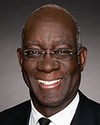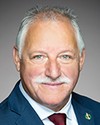There are a number of initiatives internationally relating to women veterans. We have collaborations, particularly with our closest allied countries. We have a working group on research that meets regularly and coordinates areas of mutual interest.
We have a number of working groups exploring areas that include occupational exposures and looking at the links between specific occupations in the military and downstream health impacts. That's the one that I think is most relevant to this study. We're looking at bringing in information from DND that will help us identify which occupations or which common occupations are associated with specific conditions. I think that's a critical link in our long-term research planning.
In terms of what we're doing in Canada, I think the one big development we haven't touched on today is the establishment of the Canadian veteran health survey. In the past, we had a health survey called the life after service survey, and it asked about a number of different domains of well-being. That's where many of the findings came from that were quoted in the first hour. It was very instrumental and was the best we could do at the time, starting in 2010. That's when that survey began.
Now that we've had the census in 2021, Statistics Canada is able to survey all Canadian veterans, and we've grown that survey into what we're calling the Canadian veteran health survey. It was administered first in 2022, right out of the gate after the census.
It will bring back information we've never had before. It will have coverage especially for older veterans. It will have broader coverage and more reliable estimates for smaller groups such as women veterans and smaller subpopulations, including LGBTQ2 veterans, for example. It will cover information on a number of different topics, including smoking, cannabis use, opioid use, oral health, maternal health and maternal experiences. Those are all new domains that we haven't been able to ask veterans about in the past.



